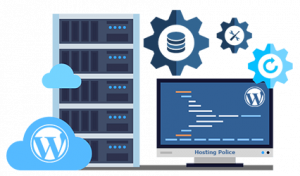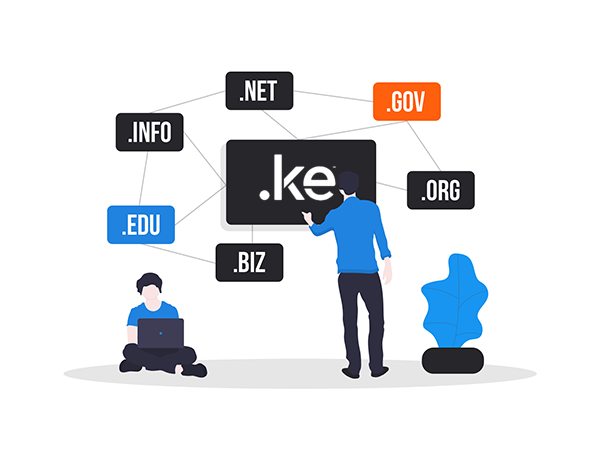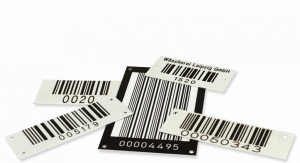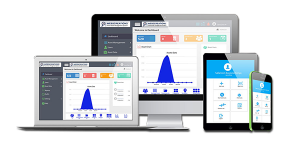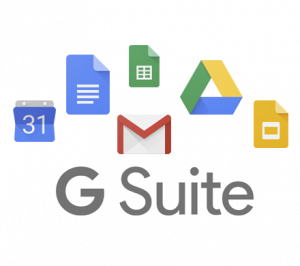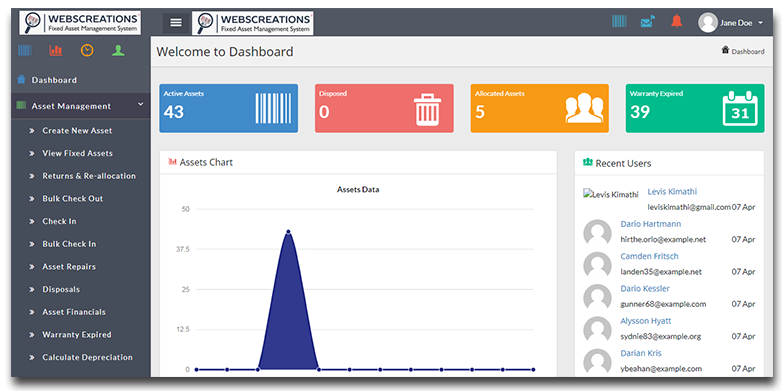Regardless of the nature of your business, you are likely to have fixed assets. These are resources that are essential to the operations of your company, which include:
- Vehicles
- Gadgets
- Machinery
- Computers and mobile devices
- Appliances
Fixed assets comprise a large chunk of a company. As IBM shares in an article, as much as 40% of an organization’s investment goes toward fixed assets. This is a huge stake, considering that fixed assets are difficult to convert into cash.
 A robot is an example of a machinery.
A robot is an example of a machinery.
Because of that, there are certain steps that an enterprise, whatever the size, must take to ensure that they maximize their expenditure toward equipment.
That is where fixed assets management comes in. Get your software listed on Software World
What is fixed asset management?
Asset management is defined by Asset Management Standards as the strategic use of resources, whether physical, monetary, human, or intangible. It also involves the acquisition, care, and disposal of assets. The same applies to fixed assets.
Why is fixed asset tracking important?
Fixed asset tracking can help in the financial accounting of the company. It can prevent future issues with the assets as well through preventive maintenance scheduling. On top of that, a company can prevent occurrences of theft and promote employee accountability.
The above advantages to fixed assets management are difficult to enjoy without the right kind of tools. That is why there is a type of software designed for this.
What is a fixed asset management software?
It is a computer program or a web-based application that helps you create a database of your fixed assets. It can then assist you in tracking every piece of equipment by connecting to RFIDs, barcodes, and scanners and GPS devices. It has a wide variety of features as well such as security and encryption.

Asset management software
The interface of an example of a fixed assets management software.
There are certain strategies that a business has to follow in maximizing its use and in attaining an effective fixed assets management practice, some of which we discuss below to help you optimize your processes.
- Collect information about assets
An effective fixed assets management is similar to how to start a business. It begins by gathering as much information as possible. In this case, about your assets. You can do this by checking your fixed assets audits, which could be on a spreadsheet, a physical file, or a fixed asset management software.
This step is crucial because it can help determine whether each of the organization’s property is serving its purpose. In this case, you may want to evaluate them according to your goals, be they long-term or short-term. Later on, this will be beneficial because you can decide to keep, maintain, renew, or upgrade them or divest them based on the value they add to the company.
- Build a tagging system
While it is not impossible, it is certainly difficult to keep track of assets manually, especially if there are hundreds to thousands to work with. What can make it less arduous is a tagging system. You do not have to build this from scratch because even a simple asset management software has the capability for it.
To begin, apart from the application, you need GPS devices, RFIDs or barcodes, and scanners. GPS devices will help you track the location of your vehicles and moveable equipment whether they are at rest or are on the road. Meanwhile, RFIDs, barcodes, and scanners will help you scan the presence of assets and record their location in your facilities quickly.
All of the above can integrate with your fixed asset management solution. This function prevents you from having to enter the same set of data repeatedly on different platforms. Therefore, you can save time and keep accurate records of your assets.
- Assign unique tracking numbers to assets
In fixed assets management, it is common practice to track assets using their serial numbers. This is not advisable, though, since one item may have the same serial number as one or more fixed resources.
What you can do instead is assign unique tracking numbers to each asset. Sounds like a tall order? Don’t be overwhelmed–it may seem like a difficult mountain to climb at first but you can use freely available tools online to generate one-of-a-kind serial numbers. After this, you are ready to tag every asset that your organization owns.
- Create an asset database
How do you build an asset database? When it comes to fixed assets, you do not have to start from the beginning. When you acquire a fixed assets manager software and configure it, you will receive a prompt to import your asset data to the dashboard. This asset data refers to your spreadsheets-based asset tracking records or to the file imported from a previous solution.
However, if you only have physical audits, you can input the data directly into the software. At first, it would be time-consuming. But when you have information about your fixed assets stored in the database, it will be easier to track them later on. In fact, certain aspects of the tracking workflow can be automated, thus reducing your administrative burden.
- Decide which assets to be prioritized
There are assets that are critical to your operations and there are assets that have less impact on your business. To achieve optimal fixed assets management, you have to identify which ones need most of your attention and which ones do not require as much. You also have to factor in the cost of keeping, maintaining, and renewing or upgrading them, which would require the assistance of fixed asset software for accountants.
The latter may be the deciding element. After all, some pieces of equipment may cost less when rented rather than owned, especially if your organization does not use them frequently. But before you make decisions to divest your business of certain assets, you have to consult with the departments that find them necessary for their tasks since they will be affected most.
Thereon, you can arrive at a mutual arrangement that will be advantageous to the whole company as well as to the particular business unit.
- Track the life cycles of assets
Some assets have shorter life cycles than the rest while others have longer life cycles but require regular upkeep. Regular asset performance monitoring using a fixed asset solution can help in determining the maximum lifespan of equipment or how often an item needs to be maintained.
Both are crucial to the efficiency of a business, as a technology that is past its usability can only be detrimental. Instead of reducing hotel cost or manufacturing cost, it can only add to the expenses or losses of a company.
Additionally, fixed assets that are not well-maintained can cause problems in the workflow. It may breakdown often, leading to interruptions in work processes. This could have a huge impact, too, especially when they are in the frontlines for serving customers. Therefore, it is imperative that you track the performance and life cycles of fixed assets to prevent damaging issues.
- Distinguish between asset management and inventory management
Some companies mistake asset tracking for inventory tracking. However the two may sound similar, they are distinct from each other. As stated in the introduction above, asset management involves the location of equipment, items, and other resources that are used for the operations of the business. Meanwhile, inventory tracking involves the management of goods that are distributed to different locations or partners, used up by employees, and sold to consumers.
Both are important, of course! But it is also essential to treat them as separate processes. Because when you confuse them, you can incur easily avoidable losses.
Optimizing fixed assets management
Fixed assets management system is not a static thing–it is a dynamic process that requires continuous improvement. At one point, you may reach an optimal stage wherein everything from the addition of assets to your database to the tracking of equipment and the disposal of items are as seamless as possible. In which case, you know you are doing things correctly. But there is always room for further improvement. Though it may be a little thing, it can boost your process. When you work on it, you not only ensure that you are managing your fixed assets well but you also make certain that your company is evolving.


